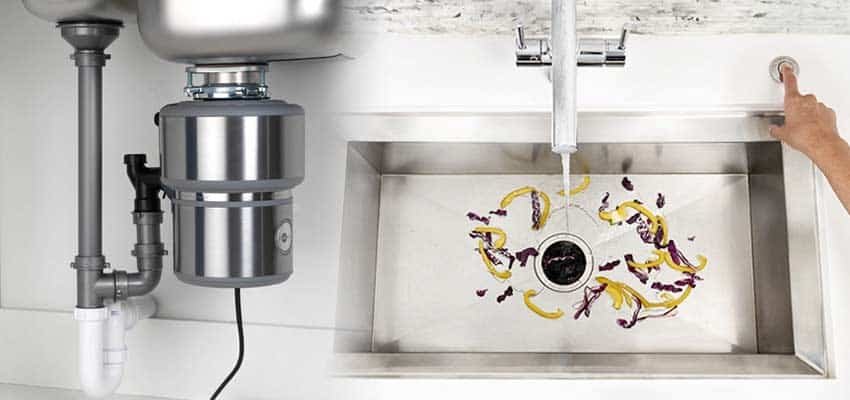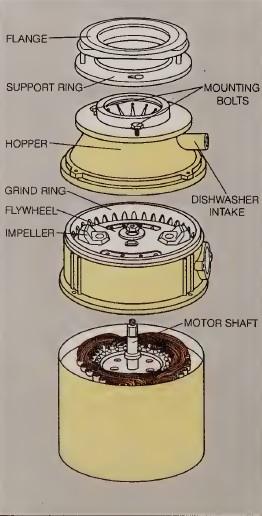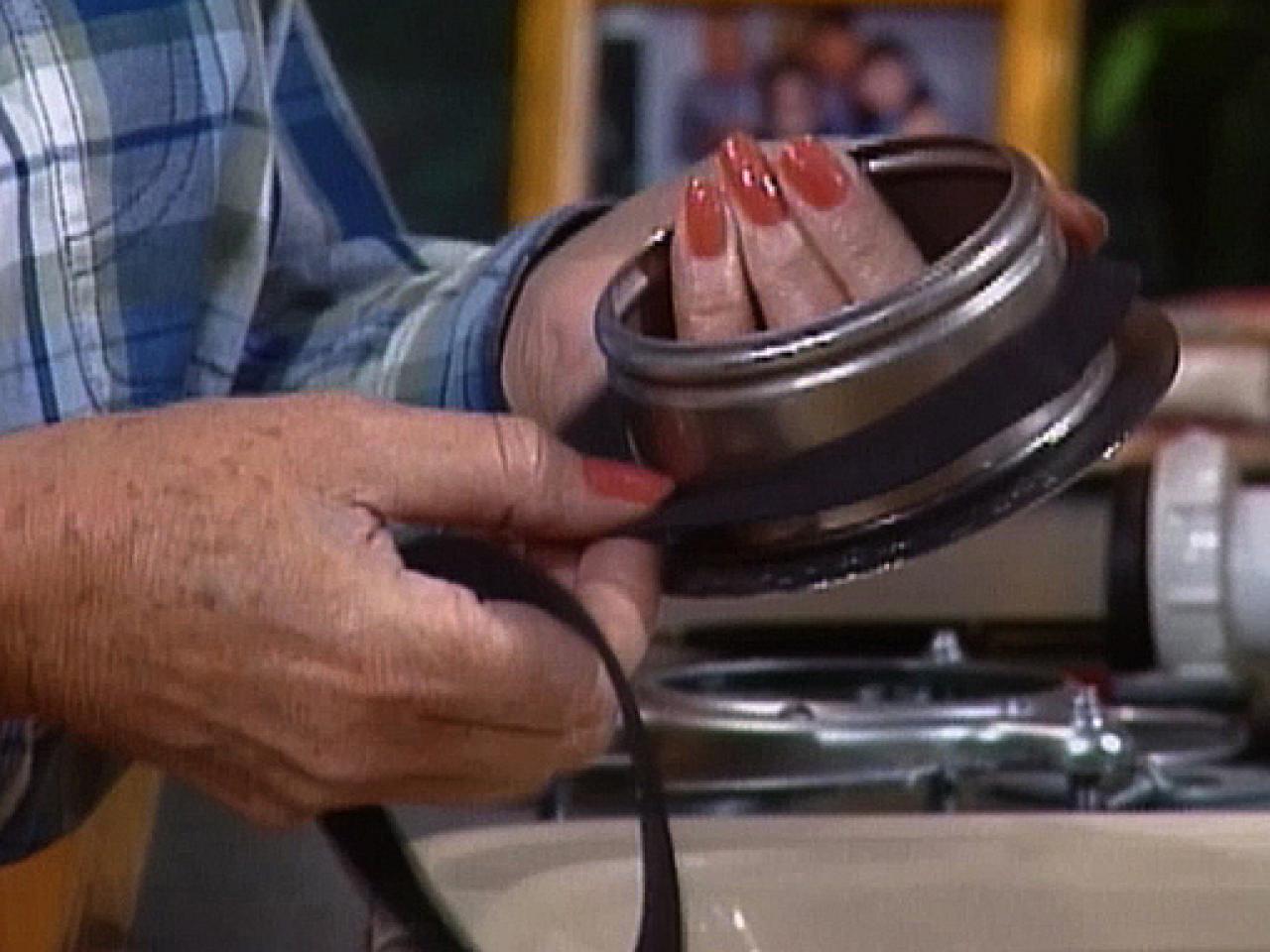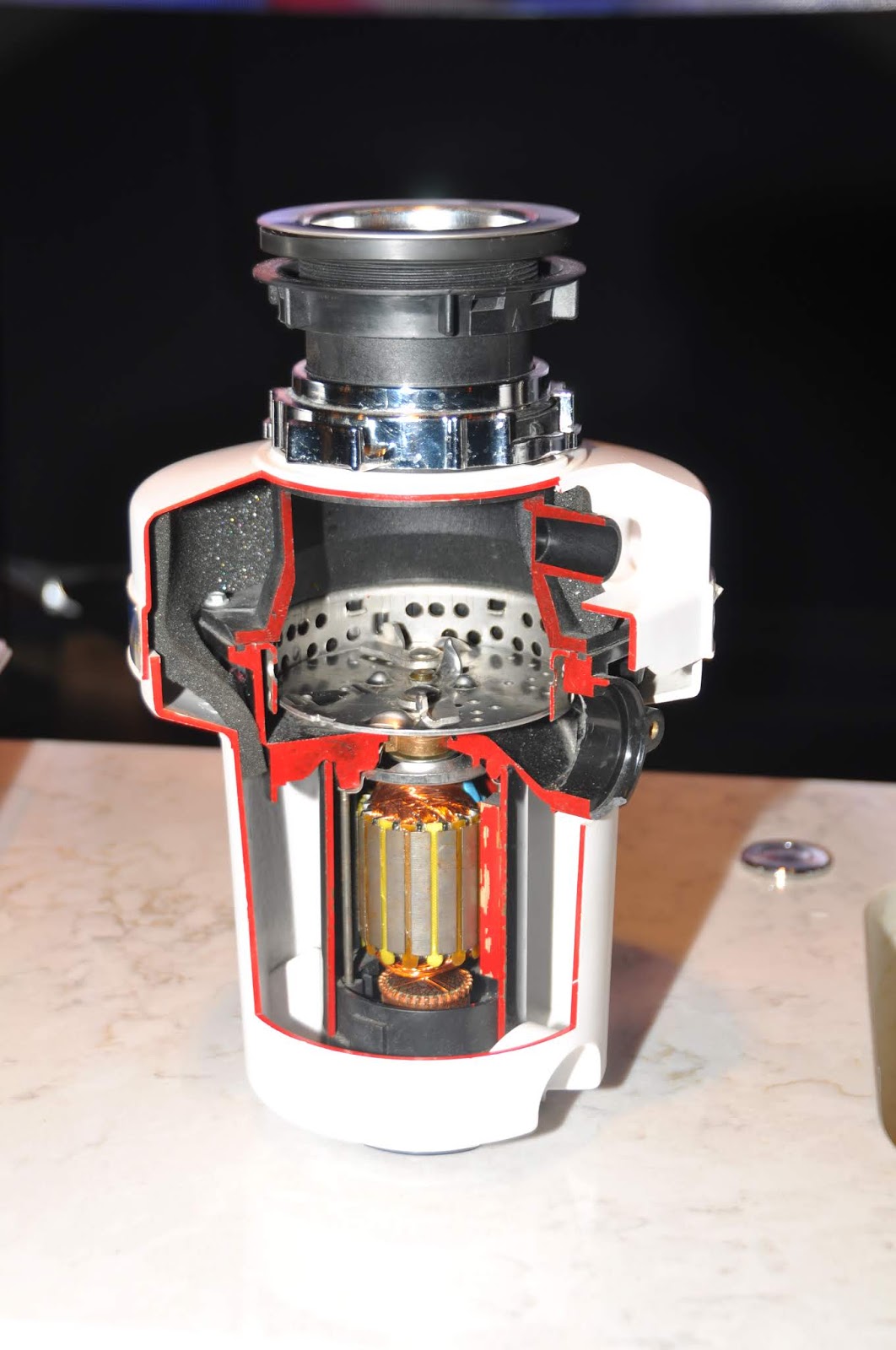How to Fix a Garbage Disposal When the Reset Button Doesn't Work
If your kitchen sink disposal has suddenly stopped working and the reset button doesn't seem to be doing anything, don't panic. This is a common problem that can be easily fixed with a few simple steps.
The first thing to check is if the reset button is actually the issue. Sometimes, the button may appear to be pushed in when it is actually not. Press the button firmly to ensure it is properly reset. If the disposal still does not turn on, move on to the next step.
Next, check the power source for the disposal. Make sure it is properly plugged in and that the circuit breaker has not been tripped. If everything seems to be in order, it's time to troubleshoot the disposal itself.
The most common cause of a garbage disposal not working is a jam. To fix this, you will need to manually turn the blades to dislodge any debris that may be causing the jam. Never put your hand into the disposal, as it can be dangerous. Use a long object, such as a wooden spoon, to turn the blades. Once the jam is cleared, try resetting the disposal again.
If the disposal still does not work, there may be a clog. You can try using a plunger to dislodge the clog, but be sure to cover the drain opening with a towel to prevent any mess. If this does not work, you may need to remove the disposal and clear the clog manually.
If none of these steps work, it is possible that the motor of the disposal may be burned out. In this case, it will need to be replaced. Contact a professional plumber for assistance with this task.
How to Fix a Clogged Garbage Disposal
A clogged garbage disposal can be a major inconvenience in the kitchen. Luckily, it can be easily fixed with a few simple steps.
The first thing to do is to turn off the power to the disposal. You can do this by unplugging it or turning off the circuit breaker. Next, locate the hex wrench that came with your disposal. Insert the hex wrench into the hole at the bottom of the disposal and turn it back and forth to dislodge any debris that may be causing the clog.
If this does not work, you can try using a plunger to dislodge the clog. Be sure to cover the drain opening with a towel to prevent any mess. If the plunger does not work, you may need to remove the disposal and manually clear the clog.
To prevent future clogs, be sure to only put small amounts of food waste into the disposal at a time and avoid putting any hard or fibrous materials in it.
How to Fix a Jammed Garbage Disposal
A jammed garbage disposal can be a frustrating problem to deal with in the kitchen. But with a little bit of effort, you can get it back up and running in no time.
The first step is to turn off the power to the disposal. You can do this by unplugging it or turning off the circuit breaker. Next, locate the hex wrench that came with your disposal. Insert the wrench into the hole at the bottom of the disposal and turn it back and forth to manually turn the blades and dislodge any debris causing the jam.
If this does not work, you may need to remove the disposal and clear the jam manually. Never put your hand into the disposal, as it can be dangerous. Use a long object, such as a wooden spoon, to turn the blades and remove any debris.
To prevent future jams, be sure to avoid putting any hard or fibrous materials into the disposal. It's also important to regularly clean and maintain the disposal to keep it running smoothly.
How to Fix a Leaking Garbage Disposal
A leaking garbage disposal can not only make a mess in your kitchen, but it can also lead to further damage if left untreated. Here's how to fix it.
The first thing to do is to locate the source of the leak. It could be coming from the top, bottom, or sides of the disposal. If the leak is coming from the top, it's likely a problem with the sink flange or the connection between the sink and the disposal. Tighten any loose connections or replace any damaged parts.
If the leak is coming from the bottom, it could be a problem with the drain line or the seal between the disposal and the sink. Check for any cracks or damage and replace any necessary parts.
If the leak is coming from the sides, it could be a problem with the dishwasher connection. Check for any loose connections and tighten them if necessary.
After making any repairs, run water down the disposal to check for any remaining leaks. If the problem persists, it's best to contact a professional plumber for assistance.
How to Replace a Garbage Disposal
If your garbage disposal is beyond repair, you may need to replace it. Here's how to do it yourself.
The first step is to turn off the power to the disposal. You can do this by unplugging it or turning off the circuit breaker. Next, disconnect the disposal from the sink and remove it from the mounting assembly.
Follow the manufacturer's instructions to install the new disposal. Be sure to properly connect the electrical wires and the plumbing. Once everything is connected, test the disposal to ensure it is working properly.
If you are uncomfortable with replacing the disposal yourself, it's best to hire a professional plumber to do the job for you.
How to Clean a Garbage Disposal
Regularly cleaning your garbage disposal can help prevent clogs, odors, and other issues. Here's how to do it.
The first step is to turn off the power to the disposal. You can do this by unplugging it or turning off the circuit breaker. Next, pour a cup of ice cubes and a cup of rock salt into the disposal. Turn on the cold water and run the disposal for a few seconds to help break up any buildup on the blades.
Next, pour a cup of baking soda and a cup of vinegar into the disposal. Let it sit for a few minutes, then run hot water down the disposal to rinse it out.
To keep your disposal smelling fresh, you can also grind up some citrus peels or use a disposal cleaner specifically designed for this purpose.
How to Troubleshoot a Garbage Disposal That Won't Turn On
If your garbage disposal won't turn on, there are a few things you can try to troubleshoot the issue.
The first step is to check the power source for the disposal. Make sure it is properly plugged in and that the circuit breaker has not been tripped. If everything seems to be in order, try pressing the reset button on the bottom of the disposal.
If the disposal still won't turn on, it's possible that the motor has burned out and will need to be replaced. Contact a professional plumber for assistance with this task.
How to Unclog a Garbage Disposal with Standing Water
A clogged garbage disposal with standing water can be a messy and frustrating problem to deal with. Here's how to fix it.
The first step is to turn off the power to the disposal. You can do this by unplugging it or turning off the circuit breaker. Next, use a plunger to try and dislodge the clog. Be sure to cover the drain opening with a towel to prevent any mess.
If the plunger does not work, you may need to remove the disposal and manually clear the clog. Be sure to wear gloves and avoid putting your hand into the disposal.
Once the clog is cleared, run hot water down the disposal to help flush out any remaining debris.
How to Fix a Garbage Disposal That Won't Drain
If your garbage disposal won't drain, there could be a clog in the drain line or in the disposal itself. Here's how to fix it.
The first step is to turn off the power to the disposal. You can do this by unplugging it or turning off the circuit breaker. Next, inspect the drain line for any clogs or damage. If necessary, remove the line and clear the clog manually.
If there are no clogs in the drain line, the issue may be with the disposal itself. Follow the steps outlined earlier for fixing a clogged or jammed disposal.
If the problem persists, it's best to contact a professional plumber for assistance.
How to Fix a Garbage Disposal That Won't Stop Running
A garbage disposal that won't stop running can be a noisy and potentially dangerous problem. Here's how to fix it.
The first step is to turn off the power to the disposal. You can do this by unplugging it or turning off the circuit breaker. Next, check the switch for any damage or debris that may be causing it to stay on. If everything seems to be in order, the issue may be with the electrical connections. Contact a professional plumber for assistance with this task.
It's important to never try to fix electrical issues yourself, as it can be dangerous. Always hire a trained professional to handle these types of repairs.
The Importance of Regular Maintenance for a Kitchen Sink Disposal
/how-to-install-a-sink-drain-2718789-hero-24e898006ed94c9593a2a268b57989a3.jpg)
Prevent Expensive Repairs with Proper Care
 Your kitchen sink disposal is an essential part of your daily routine, making meal cleanup quick and effortless. However, like any other appliance in your home, it requires regular maintenance to ensure it continues to function properly. Neglecting to care for your disposal can lead to costly repairs or even replacement. In this article, we will discuss why regular maintenance for your kitchen sink disposal is crucial and how you can keep it in top condition.
One of the most common issues homeowners face with their kitchen sink disposal is when it stops working. This can be caused by various factors, such as clogs, worn-out blades, or a motor malfunction. Whatever the reason may be, a malfunctioning disposal can disrupt your daily routine and cause inconvenience in the kitchen. By regularly maintaining your disposal, you can prevent these issues from occurring and save yourself from the hassle and expense of repairs.
Your kitchen sink disposal is an essential part of your daily routine, making meal cleanup quick and effortless. However, like any other appliance in your home, it requires regular maintenance to ensure it continues to function properly. Neglecting to care for your disposal can lead to costly repairs or even replacement. In this article, we will discuss why regular maintenance for your kitchen sink disposal is crucial and how you can keep it in top condition.
One of the most common issues homeowners face with their kitchen sink disposal is when it stops working. This can be caused by various factors, such as clogs, worn-out blades, or a motor malfunction. Whatever the reason may be, a malfunctioning disposal can disrupt your daily routine and cause inconvenience in the kitchen. By regularly maintaining your disposal, you can prevent these issues from occurring and save yourself from the hassle and expense of repairs.
Extend the Lifespan of Your Disposal
 Regular maintenance
not only prevents expensive repairs but also
extends the lifespan
of your kitchen sink disposal. By taking care of your disposal, you can avoid premature wear and tear, which can lead to the need for a replacement. The average lifespan of a disposal is around 12 years, but with proper maintenance, you can increase its longevity and save money in the long run.
Regular maintenance
not only prevents expensive repairs but also
extends the lifespan
of your kitchen sink disposal. By taking care of your disposal, you can avoid premature wear and tear, which can lead to the need for a replacement. The average lifespan of a disposal is around 12 years, but with proper maintenance, you can increase its longevity and save money in the long run.
Keep Your Kitchen Clean and Fresh
 A poorly maintained disposal can also
cause unpleasant odors
in your kitchen. Food scraps and debris can get trapped in the disposal, leading to foul smells and bacteria growth. Regular maintenance, such as flushing your disposal with hot water and baking soda, can help keep it clean and fresh. You can also use citrus peels or commercial disposal cleaners to remove any lingering odors.
A poorly maintained disposal can also
cause unpleasant odors
in your kitchen. Food scraps and debris can get trapped in the disposal, leading to foul smells and bacteria growth. Regular maintenance, such as flushing your disposal with hot water and baking soda, can help keep it clean and fresh. You can also use citrus peels or commercial disposal cleaners to remove any lingering odors.
Simple Tips for Maintaining Your Disposal
 Keeping your kitchen sink disposal in good condition doesn't have to be complicated. Here are some simple tips to help you maintain your disposal and prevent any issues:
- Run your disposal regularly to prevent rust and corrosion.
- Avoid putting large or hard objects, such as bones or fruit pits, into the disposal.
- Always run cold water while using the disposal to prevent overheating.
- Grind ice cubes to sharpen the blades and remove any build-up.
- Use a drain stopper to prevent unwanted objects from falling into the disposal.
In conclusion, regular maintenance for your kitchen sink disposal is crucial in preventing expensive repairs, extending its lifespan, and keeping your kitchen clean and fresh. By following these simple tips and incorporating them into your cleaning routine, you can ensure your disposal continues to work efficiently for years to come. Remember to always consult a professional if you encounter any major issues with your disposal.
Keeping your kitchen sink disposal in good condition doesn't have to be complicated. Here are some simple tips to help you maintain your disposal and prevent any issues:
- Run your disposal regularly to prevent rust and corrosion.
- Avoid putting large or hard objects, such as bones or fruit pits, into the disposal.
- Always run cold water while using the disposal to prevent overheating.
- Grind ice cubes to sharpen the blades and remove any build-up.
- Use a drain stopper to prevent unwanted objects from falling into the disposal.
In conclusion, regular maintenance for your kitchen sink disposal is crucial in preventing expensive repairs, extending its lifespan, and keeping your kitchen clean and fresh. By following these simple tips and incorporating them into your cleaning routine, you can ensure your disposal continues to work efficiently for years to come. Remember to always consult a professional if you encounter any major issues with your disposal.









:max_bytes(150000):strip_icc()/how-to-reset-a-garbage-disposal-5223533-04-1e218c2b51a442708093915e868b3381.jpg)








:max_bytes(150000):strip_icc()/Repair-a-Clogged-Garbage-Disposal-1824884-hero-cda06d4e6955472bbab06ed123bc5b99.jpg)




























:max_bytes(150000):strip_icc()/garbage-disposal-installation-1824830-hero-1dcd7b5b05d44a2cb367e31692500c8c.jpg)











:max_bytes(150000):strip_icc()/How-to-Clean-a-Garbage-Disposal-Refined-Final-098ce78e1bff4f60b95057129a30c09f.jpg)
:max_bytes(150000):strip_icc()/cleaning-a-garbage-disposal-2718863-20-ca02806e899940a982a72bc86fa1e42f.jpg)












































